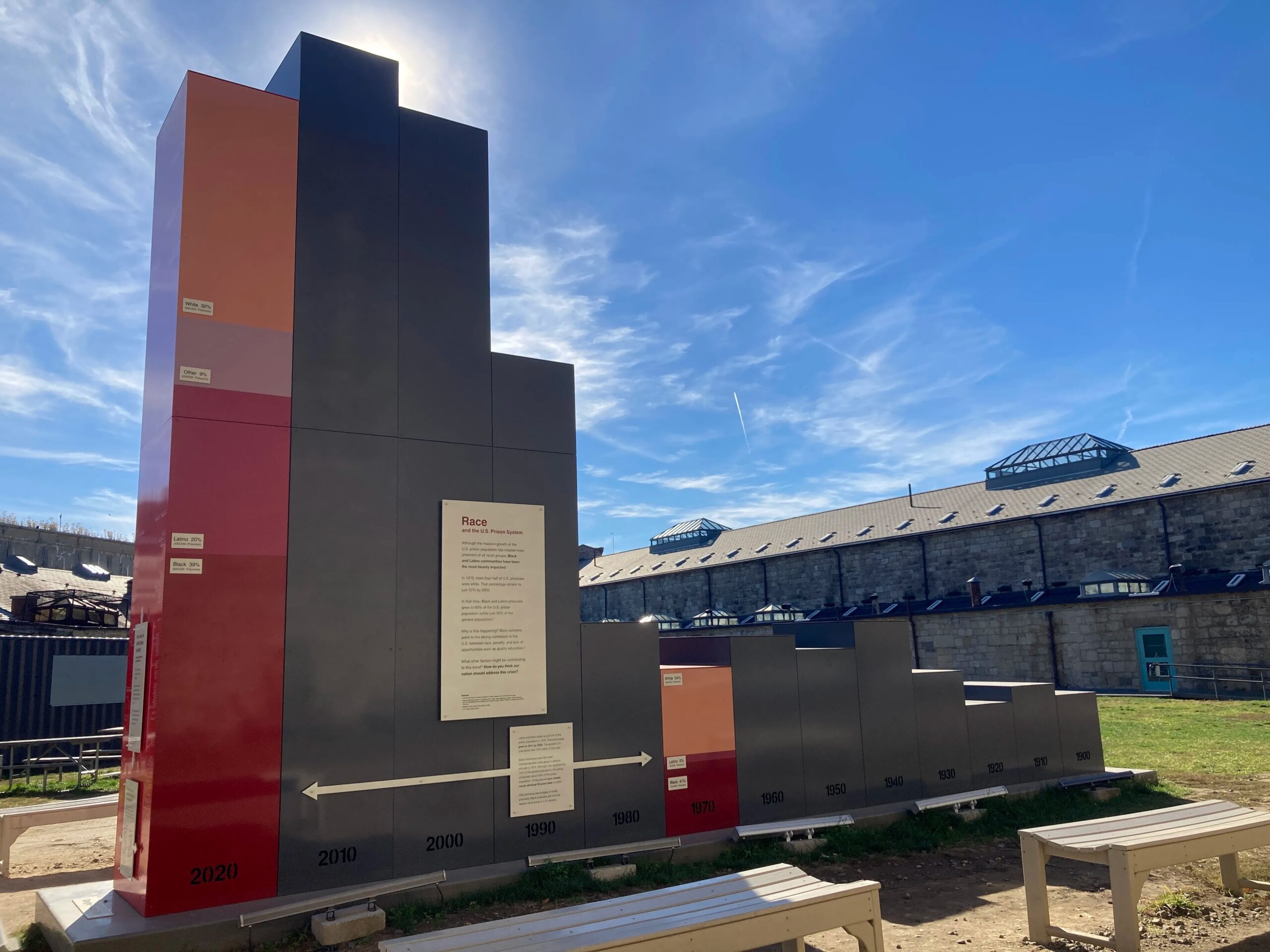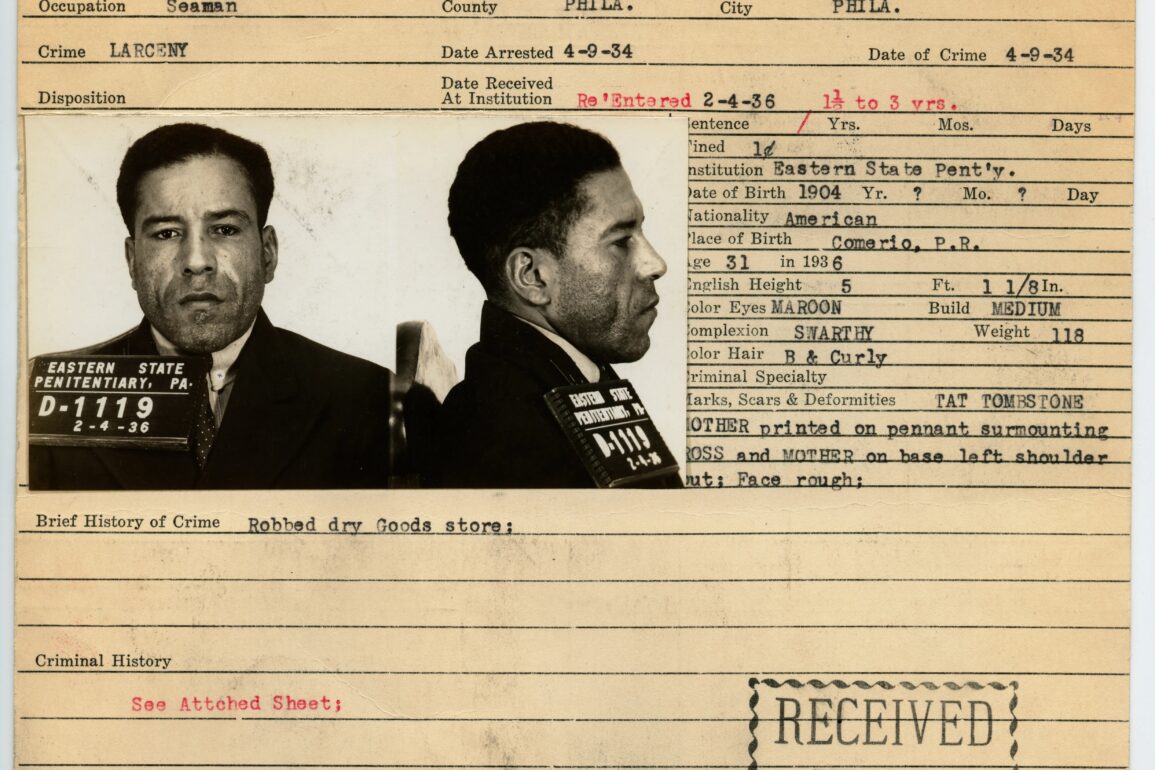In the six states with the largest Puerto Rican population, there are 5,326 men and 148 women who were born in Puerto Rico and are serving sentences ranging from one year to life in a state prison, according to data from December 2022 to February 2023, the Centro de Periodismo Investigativo/The Center for Investigative Journalism (CPI) found.
Pennsylvania, home to Roberto Clemente’s baseball team, the Pittsburgh Pirates, has the largest number of people born in Puerto Rico serving sentences in state prisons: 1,431, as of December 2022. Of that total, 21 were women. The Puerto Rican population in Pennsylvania, the third largest in the United States, is 466,450, according to the 2021 Census Community Survey.
In a municipal jail in Philadelphia, San Juan-born Clay Pizarro, 49, experienced periods of total isolation while incarcerated awaiting his sentence. It was the year 2021 and the restrictions implemented by the COVID-19 pandemic were in force.
In November of that year, Pizarro had a hearing on his case. But instead of being transported to court, he was locked in a section of the jail that was designated for quarantine, even though he was vaccinated and tested negative for the virus. This caused his legal proceedings to be delayed for months, according to a civil rights class-action lawsuit against the City of Philadelphia that was resolved in favor of the plaintiffs.
Pizarro was at Riverside Correctional Facility and feared violence because he witnessed abuse by correctional guards who used pepper spray indiscriminately, physically assaulted other inmates, and failed to protect the prison population, according to the lawsuit.
In 2022, Pizarro finally entered a state prison to serve his sentence, becoming one of the 334 people born in Puerto Rico who entered Pennsylvania state prisons in that year alone. In the Corrections public database, Pizarro is identified as Black.
For about six months, the Puerto Rican investigative outlet submitted information requests to the corrections departments of each of the six states with the most Puerto Ricans — Florida, New York, Pennsylvania, New Jersey, Massachusetts, and Connecticut — to get the demographic data on the Puerto Rican population in its prisons. The response and form of delivery of each petition was different and reflects a fragmented, unequal, and deficient information collection system.
“Structurally, you’re seeing how racism operates: they try to minimize the arguments that have been made historically in terms of incarceration in the United States being a racist phenomenon by not having the information in an adequate way,” said Carmelo Campos, attorney, and professor of penology at the Colegio Universitario de San Juan.
The United States imprisons more people per capita than any democratic country in the world, according to a study by the Prison Policy Initiative, a think tank focused on public policy on the penal system. And it disproportionately incarcerates certain groups, hence the importance of knowing the identities of those incarcerated, said Emily Widra, a senior analyst at the Prison Policy Initiative.
For Black Americans, the incarceration rate by 2021 was five times that of white people in state prisons, according to The Sentencing Project, a nonprofit organization that researches racial discrimination in the U.S. justice system and advocates for the reduction of the prison population.
The incarceration rate among Latinos or Hispanics (categories with which some Puerto Ricans identify) was more than 400 per 100,000 inhabitants by 2020. That of whites was less than 200, according to the U.S. Department of Justice’s Bureau of Justice Statistics. But there is a widespread suspicion among penal-rights organizations and scholars on the subject that the number of Latinos in prisons in the United States is higher than reported by government agencies.
The Sentencing Project attributes it to a fair amount of inconsistency in measuring Hispanic jail and prison populations: “They are frequently counted in conflicting or contradictory methods; e.g. Hispanics measured racially as Black or white and not as a distinct group.”
Black, White, Hispanic, Other
In the U.S. Census, many Puerto Ricans identify as white or Black, or even as Latino. This, and the inadequacy of the data collected by the correctional system, hinders the ability to accurately know if Puerto Ricans are being incarcerated disproportionately compared to other groups.
Down south in Florida, Ricardo González was accused of murdering a police officer during a 1992 bank robbery in Miami when he was 22. That same year he was imprisoned and in 1998 he was sentenced to death. Since then, he has appealed his sentence several times.
In one such attempt to save his life, in 2001, the defense presented the testimony of a neuropsychologist, who said that, at the time of the crime of which he was accused, González was “under extreme mental and emotional pressure because he grew up between Puerto Rico and the United States,” for not being proficient in the English language, learning problems, the need to make money, and a brain injury. The state decided to uphold the death sentence against González, who is identified as Hispanic in the official database.
In Florida, the new capital of Puerto Ricans in the United States, there were 1,144 men and 45 women who were born in Puerto Rico serving sentences in state prisons as of February 2023. Of those, five are sentenced to death, including González. Florida is the second state, after Pennsylvania, that has the most Puerto Ricans locked up.
Third is New York, with 1,002 men and 25 women who were born in Puerto Rico and are serving sentences in state prisons as of October 2022. In neighboring New Jersey, there were 435 men and 14 women, on the same date.
In February 2023, the Center for Investigative Journalism submitted a request for information on Puerto Ricans in federal prisons to the U.S. Department of Justice Federal Bureau of Prisons. The agency responded that processing the application could take up to nine months.
The number of Puerto Ricans incarcerated in the United States that the CPI was able to collect represents only those born in Puerto Rico who are in state prisons. It does not include U.S.-born Puerto Ricans, or people in municipal jails awaiting sentencing, or those in juvenile prisons, on probation, or in federal prisons.
Although it is an incomplete figure, the Puerto Rican population locked up in state prisons in the six states with the most Puerto Ricans is larger than the population of the municipality of Maricao in Puerto Rico, which has 4,755 residents.
Mario Pacheco
From the outside, the Eastern State Penitentiary looks like a medieval fortress. It occupies about nine acres of land with 30-foot-high walls on Fairmount Avenue, a commercial street in Philadelphia where people sip coffee at outdoor tables that overlook the entrance to the former prison.
Al Capone, the quintessential gangster of the prohibition era, was in that prison in 1930. That same year, on Dec. 4, a totally unknown character was admitted there, a Puerto Rican seaman named Mario Pacheco, alias Tony Jerry, Mario Reyes, or Margaro Pacheco.

Pacheco was born in 1904 in the mountain town of Comerío. When he was sent to the Philadelphia penitentiary for the second time, in 1934, he was 31 years old.
The ID card’s residence box says: “Prisoner has been in jail most of time since arrival in U.S.A.” And he is described as having maroon eyes, black curly hair, and “swarthy” complexion, a now obsolete term that could be translated as “dark skinned.” In another document from the penitentiary, he was classified as “black.”
Pacheco, who according to the ID had a tattoo of a tombstone and the word Mother on his left shoulder was accused of stealing “dry goods” from a bodega in 1934. It could have been coffee, sugar, fabrics, or tobacco, but the documents do not specify the exact product, nor the amount. It took six years for him to be able to get out of prison on probation.

Manuel Fernández, from Lancaster, entered the same prison in 1936, also for robbery, and left in 1944. In the 1940 penal census he was classified as “white.” Place of birth: “Porto Rico.”
In 1940, most of the people incarcerated in the penitentiary were Americans, according to the census. There was a Russian, an Italian, a Latvian, a Cuban and a Puerto Rican — Fernández. If this penitentiary were still operational today, there would be many more Latinos inside serving sentences.
From 1985 to 1995, the number of Latinos in state and federal prisons in the United States increased 219%. The trend continued until Latinos became the fastest growing group of incarcerated people in 2021. They currently make up about 15% of all people sentenced in state and federal prisons in the United States, according to The Sentencing Project.
“The system is selective; they’re always going to catch minorities and people who are underrepresented. That has been the reality that critical criminology has always denounced, repeatedly,” Iris Rosario, a professor of criminal law at the University of Puerto Rico and a specialist in Human Rights, told the CPI.
The growth of the prison state
In a courtyard outside the Eastern State Penitentiary there is a sculpture called The Big Graph. It is gray and red in color, stands more than 16 feet high, and weighs 3,500 pounds. It’s a giant bar graph depicting the expansion of the U.S. prison system over the past 40 years, labeled “historical in scale.” Those columns, drawn against the sky like a city that has grown quickly, condense a history of institutional racism and the criminalization of poverty.

For more than a century, the United States imprisoned between 100 and 200 people for every 100,000 inhabitants. That began to change starting in 1970. New laws and longer sentences began to dramatically increase the prison population, to the point where by 2014 close to 700 people were incarcerated for every 100,000 inhabitants.
The crime rate has gone up and down over the years and is largely independent of the incarceration rate, the Pennsylvania penitentiary exhibit explains. This implies that the uptick in the number of people in prison is not related to an upsurge in crime, but rather to a system that has become increasingly punitive.
The growth of what scholars call the “carceral state” has gone hand in hand with the “Law and Order” discourse, launched in Richard Nixon’s presidential campaign in 1968, and reinvigorated in the ‘80s under the presidency of Ronald Reagan.
In his 1994 book, El Día Menos Pensado: Historia de los Presidiarios en Puerto Rico, historian Fernando Picó says that “prison is not the solution. It’s the problem. Eliminating prisons should be a public priority.”
In the United States, the massive prison expansion in the last decades has few defenders. But reforms to reduce the number of people incarcerated have been minimal, too, says Marie Gottschalk, a professor at the University of Pennsylvania and a criminal justice specialist, in her book Caught: The Prison State and the Lockdown of American Politics.
One of the reforms that should be implemented to shrink the size of the correctional population, in addition to expanding good behavior bonuses and probation for age or medical reasons, is to have a better data collection system, said Widra, of the Prison Policy Initiative.
“You know, departments of corrections could do that so easily without a governor telling them, without a law passing, they could just collect better data … if we knew what was going on in prisons 100% of the time and who the affected people were. … Well, I think people wouldn’t be as willing to send people to prison.”
This article was produced by Centro de Periodismo Investigativo, a nonprofit center for investigative reporting in Puerto Rico.
This post was originally published on this site be sure to check out more of their content.









